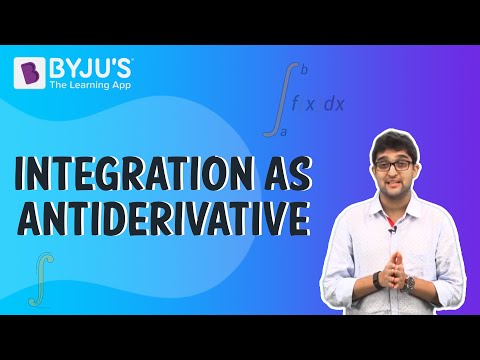Calculus Questions with solutions are given here, along with a brief concept explanation. Calculus is a branch of mathematics that deals with the continuous change in infinitesimals (differential calculus) and the integration of infinitesimals which constitutes a whole (integral calculus). It is a vast field of study; hence in this article, we will look into solving questions based on basic calculus concepts, such as limits, continuity, differentiation of functions, maxima and minima, integrals and application of derivatives and integrals.
To learn all topics under calculus, click here.
Limit of a Function
Mathematically, for a given function f(x), where x is a real number, we say that L is a limit of the function f at x = a if whenever x → a ⇒ f → L.
It is written as:
To understand this, let us take an example, let f(x) = (x2 – 4)/(x – 2), at x = 2, f becomes an indeterminate form 0/0, hence, we say that f is not defined at x = 2.
Now, f(x) = (x2 – 4)/(x – 2) = [(x – 2)(x + 2)]/(x – 2) = x + 2
Let h be a very small positive quantity, such that x + h and x – h are slightly more than 2 and less than 2, respectively.
We now observe that as h → 0, x → 2 and f → 4
Hence, we say that 4 is the limit of the function f at x = 2.
Learn more about limits.
Continuity of a Function
In calculus, the continuity of a function is defined by –
A function f at x = a is said to be continuous if,
(i) f(a) exists uniquely, and
That is, LHL = RHL = f(a)
Hence, to prove that any function is continuous, we need to show that the function satisfies the above two conditions. If the above conditions are not satisfied, then the function is discontinuous at the given point.
To learn about the types of discontinuities, click here.
Video Lesson on Continuity of a Function

Calculus Questions with Solutions
Now let us solve a few questions on limits and continuity of a function.
Question 1:
Find the limits of the following functions:
Solution:
Let y = x + 1, then as x → 0 ⇒ y → 1.
By the standard limits:
We have
Or,
Let 3x = y, as x → 0, y → 0, the given function becomes
= ⅗ × 1 (by standard limits)
Check the list of standard limits formulas.
Question 2:
Check the continuity of the following functions:
Solution:
(i) f(0) = 2(0) + 1 = 1
Now, f(0+h) = 2(0 + h) + 1 = 2h + 1
and f(0 – h) = 2(0 – h) – 1 = 2h – 1, where h is a very small positive quantity.
Since LHL ≠ RHL, the limit does not exist, and the given function is not continuous at x = 0.
(ii) f(0) = 1
Since LHL ≠ RHL, the limit does not exist, and the given function is not continuous at x = 0.
|
Differentiability of a Function A function f(x) is said to be differentiable at x = a if Rf’(a) = Lf’(a), where Rf’(a) is the right-hand derivative and Lf’(a) is the left-hand derivative, such that:
\(\begin{array}{l}Rf'(a)=\displaystyle \lim_{h \to 0}\frac{f(a+h)-f(a)}{h}\:\:\:and\:\:\:Lf'(a)=\frac{f(a-h)-f(a)}{-h}\end{array} \)
Derivative of a Function Derivative of a function f is given by:
\(\begin{array}{l}f'(x)=\frac{df}{dx}=\displaystyle \lim_{h \to 0}\frac{f(x+h)-f(x)}{h}\end{array} \)
This is called obtaining the derivative of a function from the first principle or “ab initio”. |
Refer: Continuity and differentiability of a function.
Video Lesson on Theorems of Differentiation

Question 3:
Show that f(x) = x2/5 is differentiable at x = 0, then find f’(0).
Solution:
To prove that f is differentiable at x = 0, we have to show that Rf’(0) = Lf’(0).
Now, f(0) = 0, then,
Thus, Rf’(0) = Lf’(0) = 0.
Hence, f is differentiable at x = 0 and f’(0) = 0.
Question 4:
Find the derivative of √[(1 – cos 2x)/(1 + cos 2x)]
Solution:
Let y = √[(1 – cos 2x)/(1 + cos 2x)] = √[(2 sin2 x)/(2 cos2 x)] = tan x
∴ dy/dx = d/dx (tan x) = sec2 x.
Question 5:
If x3 + y3 = 3axy, find dy/dx.
Solution:
Given, x3 + y3 = 3axy
Differentiating both sides with respect to x, we get:
3x2 + 3y2 (dy/dx) = 3ay + 3ax (dy/dx)
⇒ {3y2 – 3ax} (dy/dx) = 3ay – 3x2
⇒ dy/dx = (3ax – 3x2)/(3y2 – 3ax)
⇒ dy/dx = (ax – x2.)/(y2 – ax).
Question 6:
Find the derivative of the function (ex cos3 x sin2x), with respect to x.
Solution:
Let y = ex cos3 x sin2x
Taking logarithms on both sides, we get:
log y = log (ex cos3 x sin2x) = x + 3 log (cos x) + 2 log (sin x)
Differentiating both sides, with respect to x, we get:
1/y. dy/dx = 1 – 3sin x/cos x + 2cos x/ sin x
⇒ dy/dx = y.[1 – 3tan x + 2cot x]
⇒ dy/dx = (ex cos3 x sin2x)[1 – 3tan x + 2cot x].
Question 7:
Prove that curves x = y2 and xy = k cut each other at right angles if 8k2 = 1.
Solution:
If both the curves intersect each other at right angles, then their respective tangents at the point of intersection are also perpendicular to each other; that is, the product of their slopes at the point of intersection is –1.
Now, x = y2
Differentiating both sides, with respect to x, we get:
1 = 2y (dy/dx) ⇒ dy/dx = 1/2y = m1 (say) …(i)
Again, xy = k
Differentiating both sides, with respect to x, we get:
y + x(dy/dx) = 0 ⇒ dy/dx = –y/x = m2 (say) …(ii)
On solving the equations of the two equations:
y = k1/3 and x = k2/3
Now, m1 × m2 = –1
⇒ 1/2y × ( –y/x) = – 1
⇒ 1/2k1/3 × ( –k1/3 /k2/3) = –1
⇒ – ½ k –1/3 + ( –1/3) = – 1
⇒ k –2/3 = 2
⇒ 8k2 = 1
Question 8:
The volume of a cube is increasing at the rate of 16 cm3/s. At what rate is its total surface area increasing when the length of an edge is 6 cm?
Solution:
Let V and S be the volume and total surface area of the cube, and x be the side of the cube.
Given, dV/dt = 16 cm3/s
We have to find out dS/dt at x = 6 cm
Now, V = x3
dV/dt = 3x2 (dx/dt)
⇒ 16 = 3x3 (dx/dt)
⇒ dx/dt = 16/3x2
S = 6x2
dS/dt = 12x dx/dt = 12x × 16/3x2
⇒ dS/dt = 64/x
At x = 6 cm
dS/dt = 64/6 = 10⅔ cm2/s.
Video Lesson on Integration of a Function


Also Read:
Question 9:
Find: ∫ x8/(1 – x3)1/3 dx.
Solution:
Put (1 – x3) = t then – 3x2dx = dt or x2dx = – ⅓ dt
Now, ∫ x8/(1 – x3)1/3 dx = – ⅓ ∫ (1 – t)2/t1/3 dt
= – ⅓ ∫(t2 –2t + 1)/t1/3 dt
= – ⅓ ∫ t5/3 dt + ⅔ ∫ t2/3 dt – ⅓ ∫ t –1/3 dt + C
= – ⅛ t8/3 + ⅖ t 5/3 – ½ t2/3 + C
= – ⅛ (1 – x3)8/3 + ⅖ (1 – x3) 5/3 – ½ (1 – x3)2/3 + C.
Question 10:
Find the area between the circle 4x2 + 4y2 = 9 and the parabola y2 = 4x.
Solution:
Now, 4x2 + 4y2 = 9 represents a circle whose centre is at (0,0) and radius is 3/2 and y2 = 4x represents a rightward parabola, whose vertex is at (0, 0).
Now, let us find the points of intersection
4x2 + 16x – 9 = 0 (∵ y2 = 4x)
⇒ x = ½ and –9/2.
If x = ½ then y = ±√2
And if x = –9/2 then y is imaginary
Thus, the points of intersection are (½ , √2) and (½, –√2)

Thus, we need to find the shaded region AOBCA.
Area of AOBCA = 2 × area of AODCA = 2 × (area of AODA + area of ADCA)
Related Articles |
|
Practice Questions on Calculus
1. Find the limits of the following.
2. Determine the continuity of the following.
3. Find the derivative of the function f(x) = 3x2 – 2x, using the first principle.
4. Find the maximum and the minimum value of f(x) = sec x + log(cos2x), 0 < x < 2𝜋.
5. Evaluate:
Learn about various mathematical concepts in a simple manner with detailed information, along with step-by-step solutions to all questions, only at BYJU’S. Download BYJU’S – The Learning App to get personalised videos.